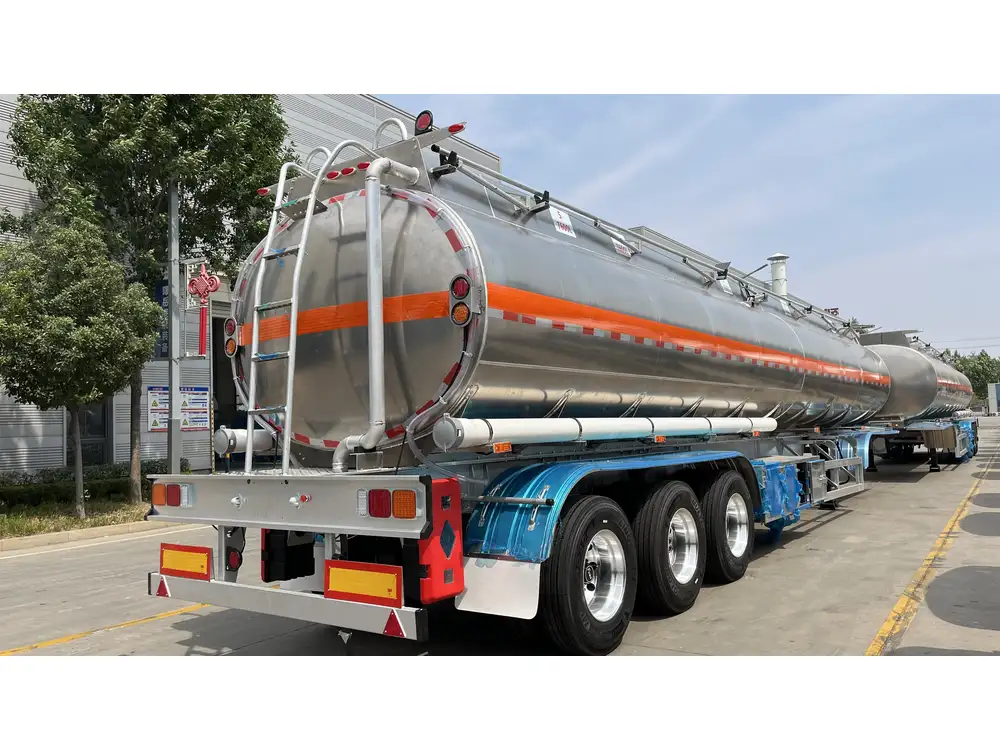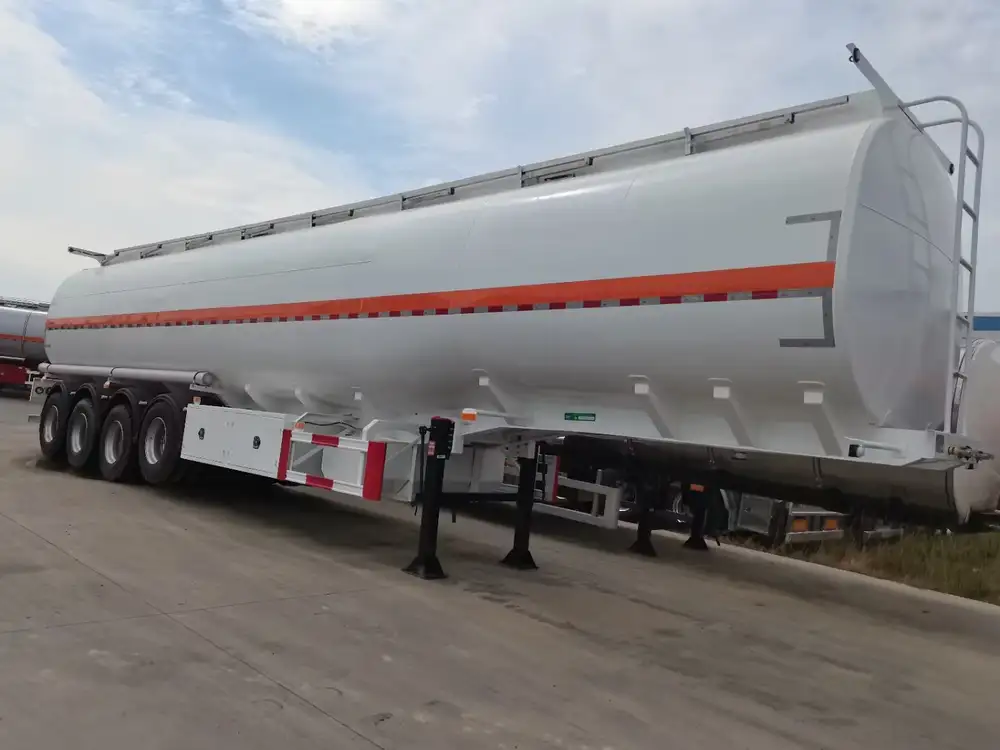The transportation industry is continuously evolving, with manufacturers and fleet operators constantly searching for ways to enhance efficiency and reduce operating costs. One such area of focus is aerodynamics, particularly the role of fenders on semi-trailers. This discussion delves into the intricate interplay between fenders and aerodynamic performance, exploring their impact on fuel efficiency, stability, and overall vehicle performance.
Understanding the Basics of Aerodynamics
Before we dive into the specifics of how fenders may influence aerodynamics, it’s essential to understand the fundamental principles of aerodynamics in the context of semi-trailers.
The Concept of Drag
Drag, in simple terms, is the resistance a vehicle encounters while moving through air. Semi-trailers, with their large surface areas, are particularly susceptible to aerodynamic drag, which can significantly affect fuel consumption and overall vehicle performance.
- Form Drag: Caused by the shape and size of the vehicle. A streamlined shape experiences less form drag.
- Skin Friction Drag: Results from the interaction between the vehicle’s surface and the air.
- Induced Drag: Occurs due to lift forces acting on the vehicle.

Importance of Aerodynamic Efficiency
Minimizing aerodynamic drag not only leads to reduced fuel consumption—an important factor in lowering operational costs—but also enhances the vehicle’s overall stability, particularly at high speeds. So, how do fenders fit into this equation?
The Role of Fenders on Semi-Trailers
Fenders (or wheel covers) are designed primarily to protect the truck’s wheels from dirt and debris but also play a critical role in aerodynamics.
How Fenders Impact Airflow
Fenders are strategically positioned to guide airflow around the wheels, which are one of the primary sources of drag on a semi-trailer. The impact of fenders includes:
- Reduced Wake: By covering the wheels, fenders reduce the wake (the turbulent air) created by the spinning wheels, thereby decreasing drag.
- Improved Airflow: These structures facilitate a smoother airflow along the sides of the semi-trailer, effectively streamlining the vehicle’s profile.
- Enhanced Stability: By minimizing turbulence, fenders help stabilize the vehicle, particularly when navigating turns or adverse weather conditions.

Types of Fenders and Their Designs
Fenders come in various designs, each with specific aerodynamic considerations. Understanding the different types can help clarify their roles in enhancing aerodynamic efficiency.
| Fender Type | Description | Aerodynamic Benefits |
|---|---|---|
| Traditional Fenders | Basic designs that cover the wheel partially. | Reduces direct airflow impact, but limited efficiency. |
| Full Coverage | Extends further to encapsulate the wheel entirely. | Significantly reduces drag and improves airflow. |
| Spoiler-integrated | Incorporates aerodynamic spoilers that direct airflow. | Maximizes airflow control and stability. |
The Science Behind Drag Reduction
To comprehend the effectiveness of fenders, it’s crucial to explore how they specifically contribute to drag reduction.
Empirical Studies
Several studies have been conducted to assess the impact of fenders on aerodynamic performance. The results consistently highlight key findings:
- Fuel Savings: Tests show that vehicles equipped with aerodynamic fenders can achieve up to 5-10% better fuel efficiency at highway speeds compared to those without.
- Speed Stability: Vehicles with enhanced fender designs exhibit increased stability and control, reducing the likelihood of swaying or destabilization.

Computational Fluid Dynamics (CFD) Analysis
Utilizing CFD tools, engineers can visualize airflow patterns around semi-trailers with and without fenders, allowing them to refine designs for optimal performance.
- Flow Visualization: Simulations illustrate how fenders decrease turbulence and streamline airflow.
- Performance Metrics: Key metrics like reduction in drag coefficient can be directly measured, validating the aerodynamic benefits of fenders.
User Considerations: Why Fenders Matter
For fleet managers and owners, the choice to equip semi-trailers with fenders can be influenced by various factors beyond mere aerodynamics.
Cost vs. Benefit Analysis
Investing in aerodynamic fenders might involve higher upfront costs, but the question remains: is the investment worth it?
| Aspect | Traditional Fenders | Aerodynamic Fenders |
|---|---|---|
| Initial Cost | Lower cost option | Higher initial investment |
| Long-Term Fuel Savings | Lesser fuel savings | Significant fuel economy benefits |
| Maintenance Requirements | Typically low maintenance | Some designs may require more upkeep |
| Impact on Vehicle Stability | Minimal impact | Enhanced stability during transit |

Environmental Considerations
With growing emphasis on sustainability, the environmental impact of improved fuel efficiency cannot be overlooked. Reductions in fuel consumption directly correlate with decreased emissions, aligning with regulatory compliance and corporate sustainability goals.
Frequently Asked Questions
Do fenders increase the overall weight of the trailer?
Yes, while fenders do add some weight, the increased fuel savings and aerodynamic benefits typically outweigh this drawback.

Can I retrofit my existing semi-trailer with fenders?
Absolutely! Many manufacturers offer fender kits that are designed to be easily installed on existing models without significant modifications.
How do I choose the right fender for my trailer?
Consider your specific operational needs, including typical routes, speeds, and payload. Consult with manufacturers or aerodynamic specialists to find the best option for your fleet.
Conclusion: Enhancing Fleet Efficiency with Fenders
In the competitive world of transportation, every detail matters. The introduction of aerodynamic fenders on semi-trailers is a small yet impactful modification that can yield considerable benefits in terms of fuel efficiency, stability, and sustainability. While the initial investment may be higher, the long-term savings in fuel cost and compliance with environmental regulations often justify the expense.
As we continue to seek improvements in vehicle design and efficiency, the role of fenders will remain critical in our quest for optimizing semi-trailer performance and delivering reliable, cost-effective solutions to our clients. Implementing enhanced fender designs is not just a trend—it’s a strategic move towards a sustainable and economically sound future in transportation.
Incorporating aerodynamic fenders in your fleet can revolutionize both performance and operating costs, paving the way for a greener and more efficient transportation sector.



